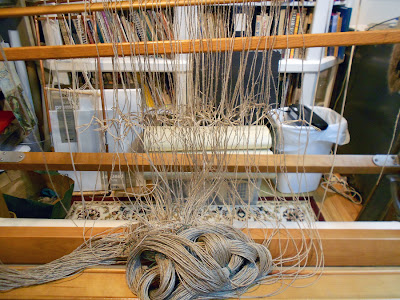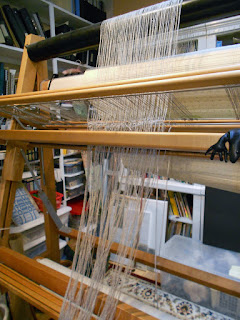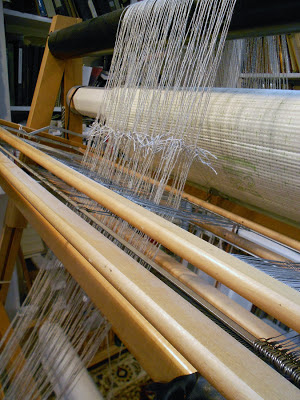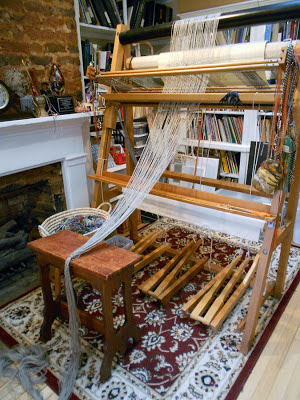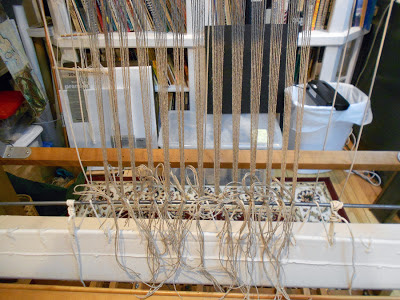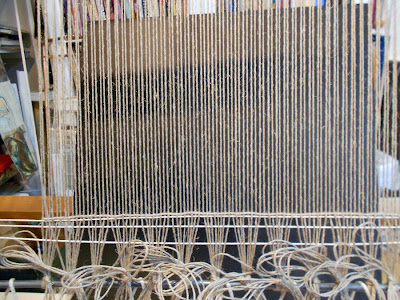Our Tapestry Study Group which is a local group of Tapestry Weavers South and Chattahoochee Handweavers Guild has been pursuing enrichment activities to learn more about tapestry this year. On November 14, 2013 seven of us met at Tommye Scanlin's studio. A more perfect day couldn't have been ordered from a catalog! The autum weather was crisp and sunny. Tommye greeted us with coffee, tea, and pecans from her own tree. Best of all we got to spend time with Tommye in her studio and her home and in Dahlongea around the square.
The first part of our visit was in Tommye's studio. There we got to ask questions about her looms and works in progress as well as tapestries from other artists whose work is there. Naturally, the looms and works in progress are even more beautiful in real life than in any photograph. We also saw tapestries that Tommye has collected from other great tapestry artists like Archie Brennan.
We were also treated to a tour of her beautiful home and home studio. We were amazed at how much tapestry Tommye produces. Tommye talked about her design process. The experience of touring her studio and home left us aspiring to come close to her level and thanful for the opportunity to spend time with her.
We had lunch at the Crimson Moon Cafe on the square and walked to Jo Marie Karst's weaving class at North Georgia College. Her students were there working an we enjoyed visiting with them. The classroom is well lighted large and filled with looms. Jo Marie has a mixture of beginning and advanced students. Thank goodness some colleges keep these looms and programs alive and working! The students are fortunate to have weaving as a part of the programs offered there.
Thank you, Tommye, for so generously sharing your studio and home with us and most of all for sharing yourself with us! Thank you Jo Marie for sharing your classroom and students with us!
The first part of our visit was in Tommye's studio. There we got to ask questions about her looms and works in progress as well as tapestries from other artists whose work is there. Naturally, the looms and works in progress are even more beautiful in real life than in any photograph. We also saw tapestries that Tommye has collected from other great tapestry artists like Archie Brennan.
We were also treated to a tour of her beautiful home and home studio. We were amazed at how much tapestry Tommye produces. Tommye talked about her design process. The experience of touring her studio and home left us aspiring to come close to her level and thanful for the opportunity to spend time with her.
We had lunch at the Crimson Moon Cafe on the square and walked to Jo Marie Karst's weaving class at North Georgia College. Her students were there working an we enjoyed visiting with them. The classroom is well lighted large and filled with looms. Jo Marie has a mixture of beginning and advanced students. Thank goodness some colleges keep these looms and programs alive and working! The students are fortunate to have weaving as a part of the programs offered there.
Thank you, Tommye, for so generously sharing your studio and home with us and most of all for sharing yourself with us! Thank you Jo Marie for sharing your classroom and students with us!




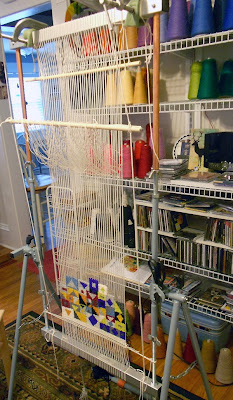
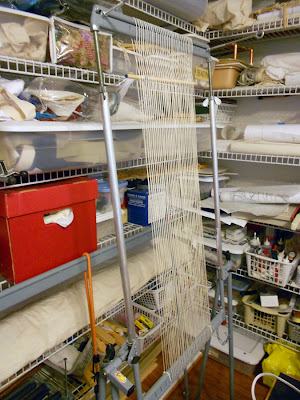
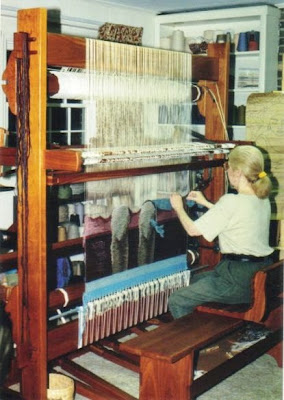.jpg)


